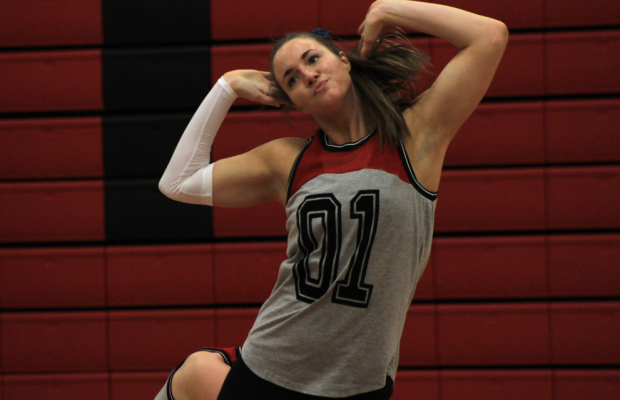Head Games: Impact of concussions felt among CFHS athletes

By: Jason Rathjen
Senior Hannah Gaffney was in the middle of her coed dance routine at the state dance competition on Friday, Dec. 4 when out of nowhere, a foot from one of the other CFHS dancers collided into her face with a force that she could not comprehend. She took a seat and miraculously went back out later and performed her pom routine. It was not until the bus ride home that everything would snowball into a terrifying situation.
Gaffney was found unresponsive by her teammates, and they frantically tried to wake her up but did not succeed. Gaffney was taken by ambulance to the hospital where she underwent numerous tests and scans.
The effects of her concussion were some of the worst that can occur with a head injury. She went into a coma-like state on the bus, and she is still suffering from severe memory loss as she doesn’t even remember who some people are.
Gaffney is forced to relearn things every day due to her injury. “We’re just taking it day by day, and even though I don’t remember any of it, my last State was certainly memorable,” Gaffney said. Doctors say that it will take time for her to return to functioning normally.
Each year high school athletes accumulate nearly two million injuries, 500,000 doctor visits and 30,000 hospitalizations. Gaffney was one of the ones unfortunate enough to be among the 30,000 hospitalizations. These numbers are alarming to many who are involved in the athletic world.
What she suffered at State was a concussion, which is basically a bruise to the brain. The brain is not fixed in position in the head, and there is a little bit of space between the brain and the inside of the skull. A concussion occurs when an impact to the head or neck area causes the brain to bang against the inside of the skull, which in turn causes bruising. Concussions are not something to be taken lightly and can cause lifelong complications.
As awareness of the implications of concussions rises, many coaches today are trying out new coaching philosophies that emphasize “heads-up” play. “From a coaching standpoint, we educate coaches on the causes and symptoms of a concussion and teach athletes to remove the head from blocking and tackling,” head football coach Brad Remmert said. “We also have strength training to prepare athletes for the contact of football and provide high quality helmets and equipment for our players.”
School administrators are also taking proactive steps to making sure that their student athletes are as safe as possible. “We require all student athletes and their parents/guardians to sign a form stating that they have read and understand the ‘Heads Up: Concussion in High School Sports’ fact sheet,” Athletic Director Gary Koenen said. “We are also fortunate that we have an athletic trainer (Pete Watters) at all our practices and competitions that can help diagnose and treat a concussion should medical attention be needed,” Koenen said.
This style of coaching encourages the athletes to make a tackle or play with their bodies instead of their heads. Even the pros are relearning how to be safe. The NFL Seattle Seahawks teach their players rugby style tackling, which is tackling with the shoulder and driving through the opponent. This style of tackling greatly diminishes the risk of a head injury as the head is taken out of the play, but this does not mean the risk of a head injury is not still there.
Parents are also a big influence, encouraging their children, pushing them but most of all making sure they are safe. Today the concern that athletes’ parents have on their children getting injured has skyrocketed. “My concern is that schools are providing proper equipment, proper techniques to help avoid injury and that when an injury does occur, recovery protocol is followed so that players are not returning to activity before they are ready,” parent Kim Williams said.
Players are working harder than ever, and the pace of play in all sports has dramatically increased. This combination has led to an alarming increase in sports injuries, especially concussions.
The players themselves also see the injury and concussion risk that comes with any sport. Although it may not seem like it, players are taking responsibility for their bodies as much as they can to avoid an injury.
“I try to avoid the big hits, and if I do get hit, I try to protect my head from the ground so it doesn’t whip into the ground,” senior Taylen Alexander said.
Players like senior defender David Cook are also taking safety precautions. “There are rules about dangerous plays like high kicks and elbows, but I mainly work on heading the ball correctly and taking precautions when going into certain challenges,” Cook said.
Eating well, building strength and maintaining condition all contribute to diminishing the risk of sports related injuries.
According to the Center for Disease Control, more than half of all sports injuries are preventable. Concussions are one of those preventable injuries. With correct technique and education, the concussion rate could be dramatically decreased in all sports.
Concussions have been found to be behind recent deaths of former NFL players like Junior Seau and Frank Gifford. Both deaths were influenced by a disease that stems from this preventable injury.









You must be logged in to post a comment Login